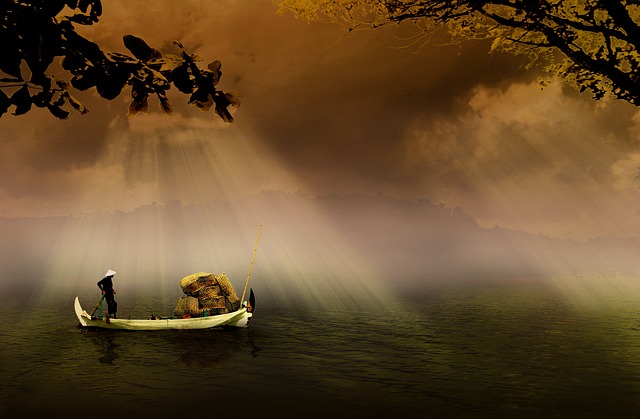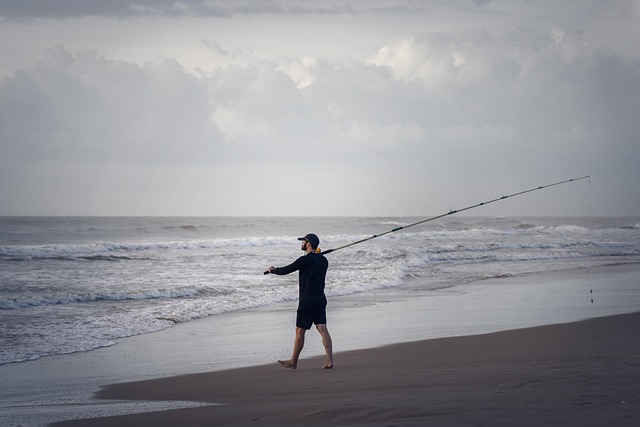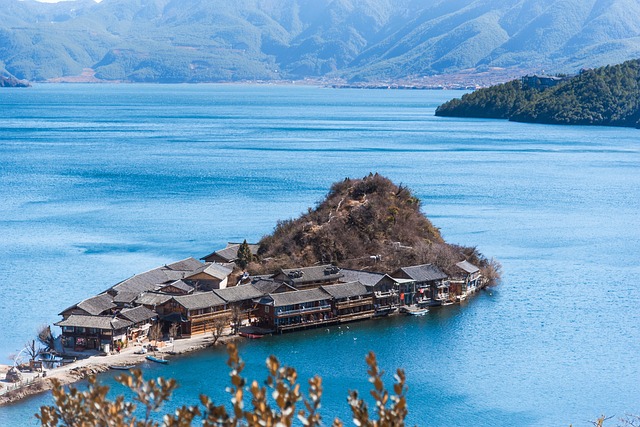Crystal clear lakes and rivers are vital ecosystems that support diverse river wildlife habitats. Protecting these water bodies is crucial for maintaining ecological balance, preserving popular fishing spots, kayaking adventures, and paddleboarding locations, as well as beloved Lakeside picnic areas. Conservation efforts focus on minimizing pollution and controlling invasive species to ensure water clarity and health. Sustainable practices like proper waste management and controlled access help protect these spaces for future generations while facilitating responsible recreational activities. By adhering to best practices, enthusiasts can contribute to the long-term health of these waterways, preserving their biodiversity and rich natural beauty.
Discover the world of river conservation and explore diverse ways to protect our precious water sources. From crystal-clear lakes to bustling riverways, each ecosystem plays a vital role in our environment. Learn how balancing recreation with conservation is key, whether you’re casting a line at popular fishing spots or kayaking through scenic routes. We also delve into preserving natural spaces for community enjoyment, safeguarding biodiversity in river wildlife habitats, and promoting sustainable practices for paddleboarding locations.
- Crystal Clear Lakes: Protecting Our Water Sources
- Popular Fishing Spots: Balancing Recreation and Conservation
- Kayaking Adventures: Exploring Riverways with Care
- Lakeside Picnic Areas: Preserving Natural Spaces for Community Enjoyment
- River Wildlife Habitats: Safeguarding Biodiversity in Flowing Ecosystems
Crystal Clear Lakes: Protecting Our Water Sources

Crystal clear lakes are not only scenic wonders but also vital ecosystems that support a diverse array of river wildlife habitats. Protecting these water sources is paramount for maintaining the balance of local ecosystems and preserving popular fishing spots, kayaking adventures, and paddleboarding locations. Many conservation efforts focus on minimizing pollution and controlling invasive species to ensure the clarity and health of these lakes.
Lakeside picnic areas have become beloved gathering spaces for families and friends, but they rely on clean water just as much as the wildlife that inhabits them. By implementing sustainable practices, such as proper waste management and controlled access, conservationists aim to protect these cherished locations for future generations to enjoy. This includes promoting responsible recreation activities like kayaking and paddleboarding, which not only contribute to a healthy environment but also foster an appreciation for the natural world.
Popular Fishing Spots: Balancing Recreation and Conservation

Many river conservation efforts focus on protecting and restoring natural habitats, but they also recognize the importance of recreational activities that draw people to these waterways. After all, crystal clear lakes and winding rivers often serve as popular fishing spots, offering peaceful kayaking adventures and scenic paddleboarding locations. These areas also double as Lakeside picnic grounds, providing a respite for families and friends to connect with nature. However, balancing these recreational uses with conservation goals is crucial. Overcrowding can disturb river wildlife habitats and leave behind remnants of discarded gear, impacting the overall health of the ecosystem.
To address this, conservation organizations work with local communities to promote sustainable practices among visitors. This may include educating anglers about proper waste disposal, setting designated paddling routes to minimize disturbance in sensitive areas, and encouraging responsible behavior that respects both the environment and other users. By adopting these measures, popular fishing spots can continue to thrive as both recreational destinations and thriving river wildlife habitats for years to come.
Kayaking Adventures: Exploring Riverways with Care

Kayaking adventures on pristine rivers offer a unique way to explore and appreciate nature while also highlighting the importance of conservation efforts. Many popular fishing spots and Lakeside picnic areas are nestled along these waterways, attracting folks who seek tranquility and outdoor recreation. However, as enthusiasts enjoy activities like kayaking and paddleboarding, it’s crucial to navigate with care to protect the delicate river ecosystems and their diverse wildlife habitats.
River conservation goes beyond ensuring crystal clear lakes; it involves maintaining the balance of aquatic life, preserving vegetation along shorelines, and mitigating human impact. By adhering to responsible practices, such as respecting designated trails, minimizing disturbance to wildlife, and properly disposing of waste, kayakers and paddleboarders can contribute to the long-term health of these beloved riverways.
Lakeside Picnic Areas: Preserving Natural Spaces for Community Enjoyment

Lakeside picnic areas play a vital role in river conservation efforts by offering a balance between community enjoyment and environmental preservation. These natural spaces, often nestled along crystal clear lakes, double as popular fishing spots and kayaking adventures, fostering connections with the river’s vibrant wildlife habitats. By designating specific areas for picnics and water sports, conservationists can protect sensitive ecosystems while allowing locals and visitors alike to appreciate and interact with these natural wonders.
These picturesque locations also serve as ideal paddleboarding sites, drawing enthusiasts who are mindful of their impact on the environment. Well-managed Lakeside picnic areas encourage sustainable practices, such as proper waste disposal and limited access during migration seasons, ensuring that future generations can continue to enjoy these stunning landscapes.
River Wildlife Habitats: Safeguarding Biodiversity in Flowing Ecosystems

River wildlife habitats play a vital role in maintaining biodiversity within our precious flowing ecosystems. These dynamic environments support an array of plant and animal life, from fish populations that thrive in crystal clear lakes to birds that call the riverbanks their home. Protecting these habitats is crucial not only for ecological balance but also for the recreational activities they sustain, such as popular fishing spots, kayaking adventures, and paddleboarding locations. Moreover, many rivers feature scenic Lakeside picnic areas that enrich our outdoor experiences, underlining the interconnectedness of conservation efforts with human enjoyment.
Efforts to safeguard river wildlife habitats involve a range of strategies, from establishing protected areas along shorelines to implementing sustainable practices in nearby communities. By preserving these natural settings, we ensure the continued existence of diverse species and maintain the overall health of our rivers. This, in turn, enhances the appeal of these waterways for outdoor enthusiasts while promoting ecological equilibrium that benefits all inhabitants, both human and wildlife.
